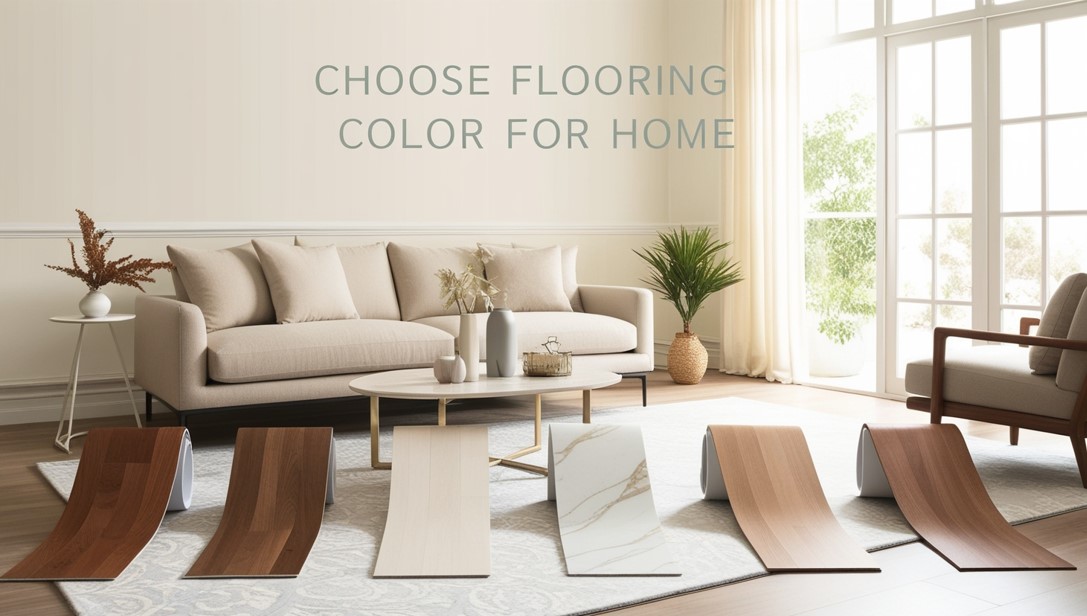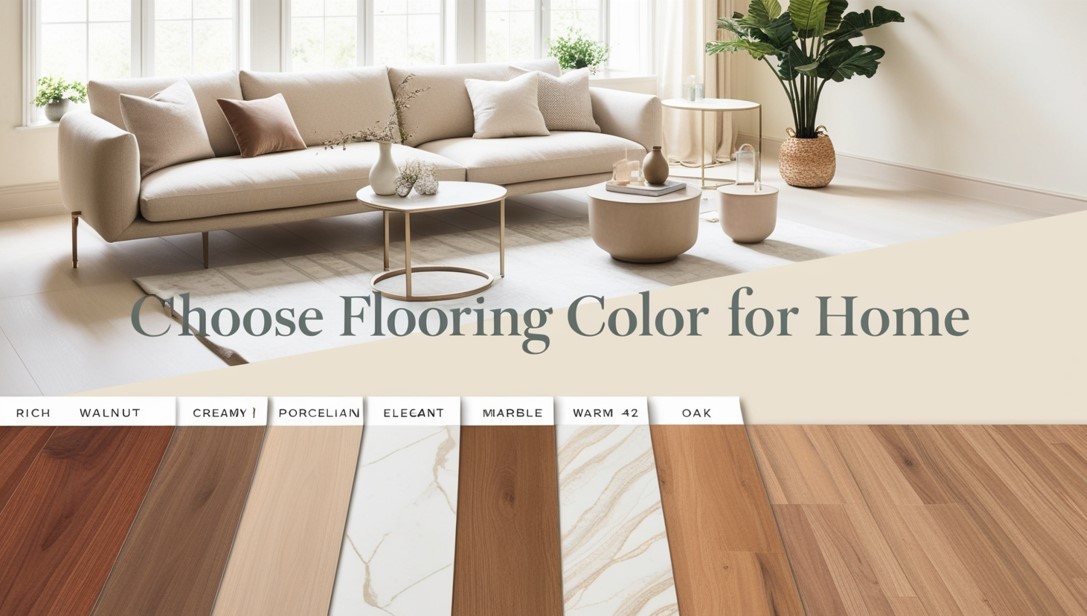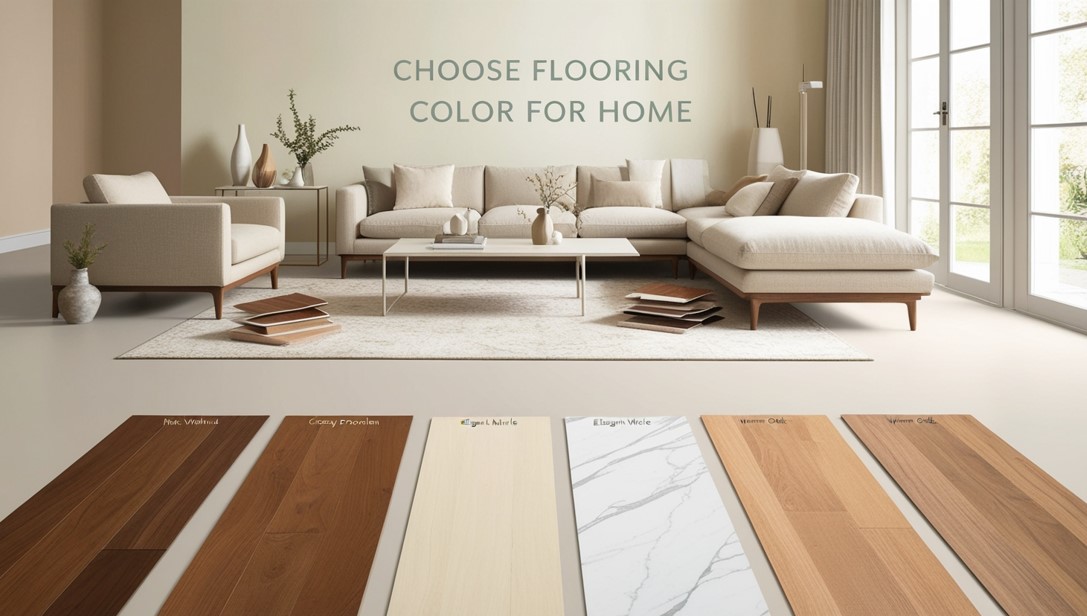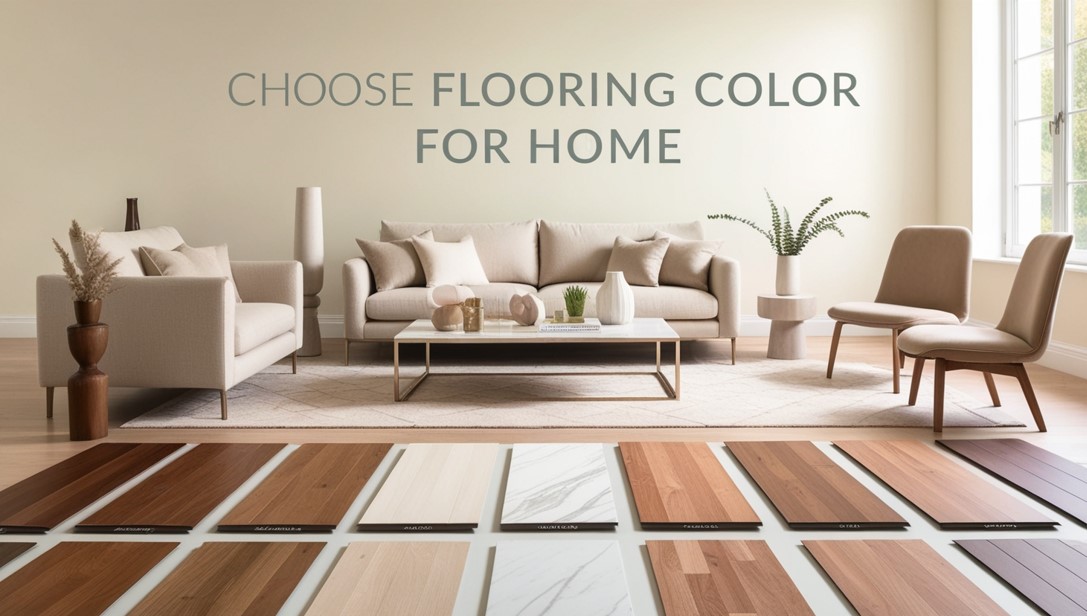Choosing the right flooring color is crucial when designing or renovating a home. It can dramatically impact the look and feel of your space, influencing everything from ambiance to resale value. Whether you prefer a modern, traditional, or eclectic style, the right flooring color can enhance your decor and create the perfect atmosphere. This guide will walk you through the key factors to consider when selecting a flooring color for your home.
Factors to Consider When Choosing Flooring Color
1. Room Size and Lighting
The color of your flooring affects how spacious or cozy a room feels.
- Light-colored floors (white, beige, light gray) make a small space appear larger and more open.
- Dark-colored floors (walnut, espresso, dark gray) add warmth and coziness but can make a room feel smaller without adequate lighting.
- Natural wood tones (oak, maple) provide a balanced, timeless look suitable for most spaces.
Consider natural and artificial lighting in your room. Dark floors can work well if your room receives much natural light. In contrast, lighter flooring can help brighten the space for dimly lit rooms.

2. Home Decor and Interior Style
Your flooring should complement your furniture, walls, and decor. Here’s a quick guide:
- Modern and Minimalist Interiors: Opt for light gray, whitewashed wood, or cool-toned floors.
- Rustic and Traditional Homes: Rich brown, warm oak, or hickory floors add character.
- Industrial or Urban Style: Concrete gray, dark walnut, or distressed wood flooring fits well.
- Coastal or Beach House Style: Whitewashed, light beige, or pastel-toned flooring enhances the airy feel.
3. Maintenance and Durability
Different flooring colors require varying levels of maintenance:
- Light-colored floors: Show dirt and stains less, but can reveal scuff marks easily.
- Dark-colored floors: Conceal dirt well but highlight dust and scratches.
- Medium-toned floors: Provide a balanced look, requiring moderate upkeep.
If you have pets or children, consider a flooring color that effectively hides dirt, scratches, and pet hair.
4. Flooring Material and Finish
Different flooring materials come in a variety of color options:
- Hardwood Flooring: Available in natural hues ranging from light maple to deep mahogany.
- Laminate Flooring: Offers a wide selection of colors and patterns mimicking wood or stone.
- Vinyl and Tile Flooring: Available in countless shades, including bold and neutral tones.
- Carpet Flooring: Comes in various colors but requires careful selection for longevity.
The finish (matte, satin, or glossy) also affects the final look. Matte finishes offer a subtle, elegant appearance, while glossy finishes provide a polished and reflective surface.

Popular Flooring Color Trends
1. Neutral and Timeless Shades
Neutral shades like light oak, beige, and gray continue to dominate interior design due to their versatility. They work well with various decor styles and allow flexibility in furniture and wall colors.
2. Dark and Dramatic Tones
For a bold statement, deep browns, espresso, and black flooring create a luxurious and sophisticated feel. However, these colors require good lighting and proper maintenance to avoid a dull appearance.
3. Gray and Greige (Gray + Beige) Floors
Gray flooring has been a popular choice for contemporary homes, offering a sleek and modern touch. Greige combines warmth with neutrality, making it a great compromise between traditional and contemporary aesthetics.
4. Natural and Whitewashed Wood
Natural wood tones or whitewashed flooring create an airy and inviting atmosphere for a Scandinavian or coastal-inspired look. These light shades make spaces feel larger and more open.
Tips for Choosing the Right Flooring Color
- Use Samples: Always bring home flooring samples to see how they look under your home’s lighting and alongside furniture.
- Consider Future Resale Value: Neutral colors have broad appeal and are more likely to attract potential buyers.
- Match with Baseboards and Doors: Ensure the flooring complements trim, baseboards, and doors for a cohesive look.
- Think About Longevity: Trends come and go, but classic shades like oak, walnut, and gray remain timeless.

Frequently Asked Questions
1. What is the best flooring color for a small room?
Light-colored flooring, such as beige, light gray, or whitewashed wood, helps make a small room feel more spacious and open.
2. Does dark flooring make a room look smaller?
Dark flooring can make a room feel cozier and smaller, especially with limited lighting. However, pairing dark floors with light-colored walls and good lighting can create a balanced look.
3. What flooring color hides dirt and scratches best?
Medium-toned flooring, such as warm oak or beige, best hides dirt, dust, and scratches.
4. Should flooring be lighter or darker than walls?
There are no strict rules, but a good design principle is to choose flooring that contrasts slightly with the walls. Light walls with dark floors create depth, while light flooring with darker walls provides a balanced contrast.
5. What flooring color is best for resale value?
Neutral shades like oak, light gray, and beige are the best choices for resale value as they appeal to a broader range of homebuyers.
Conclusion
Choosing the right flooring color for your home requires careful consideration of factors such as room size, lighting, maintenance, and decor style. Whether you prefer neutral tones, bold hues, or classic wood finishes, selecting a flooring color that complements your space will enhance its overall aesthetic and functionality. Take the time to test samples, consider future trends, and invest in a flooring choice that suits your lifestyle and personal taste.

